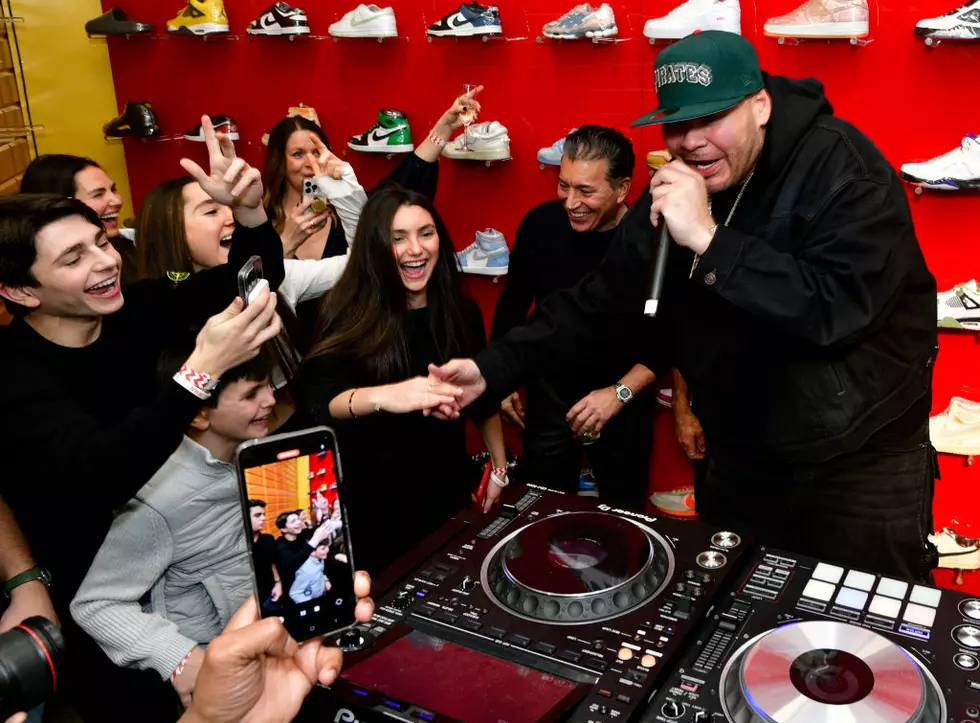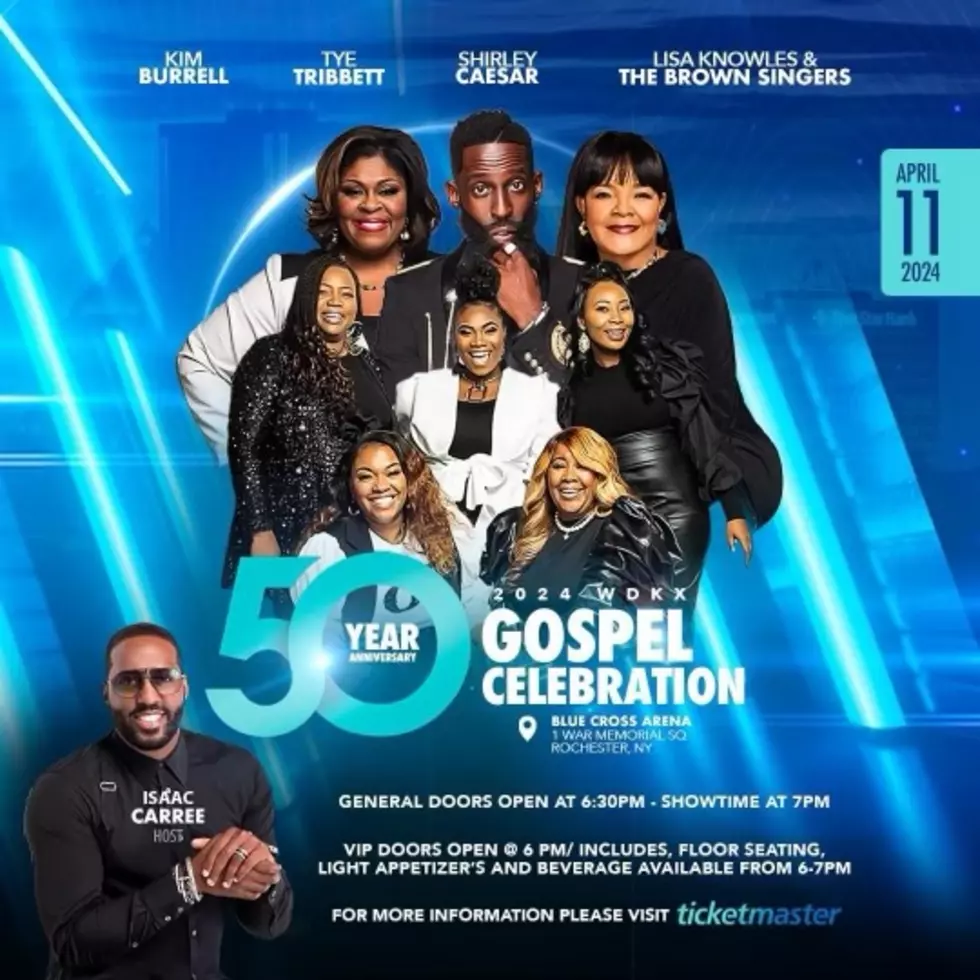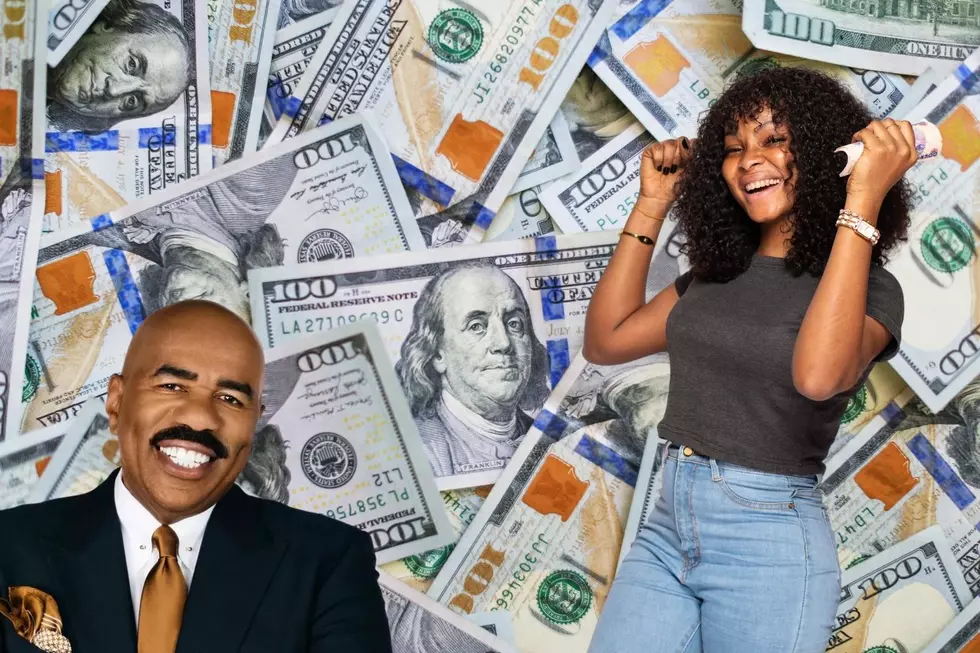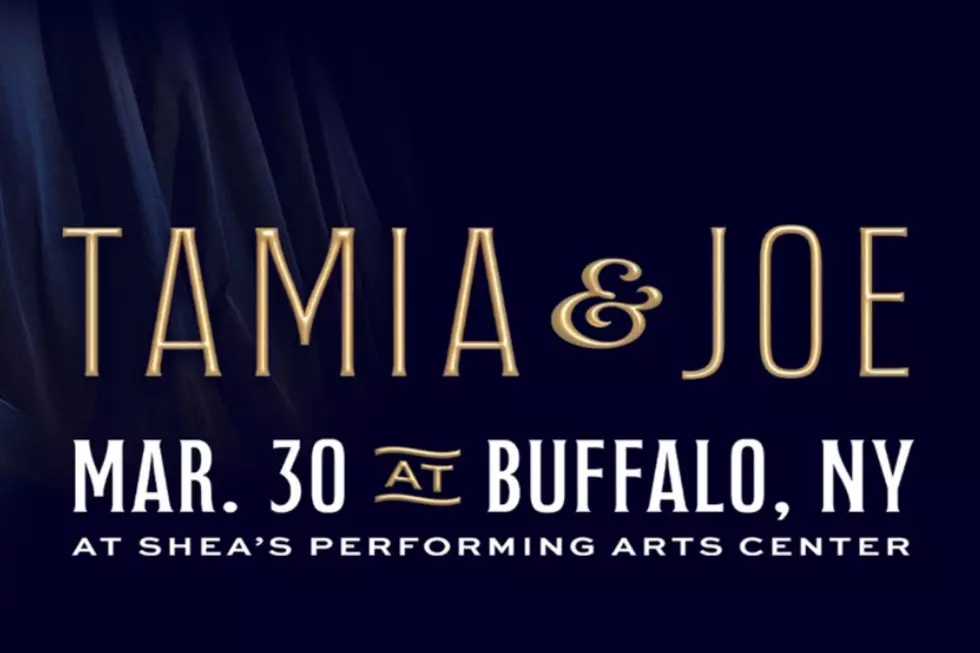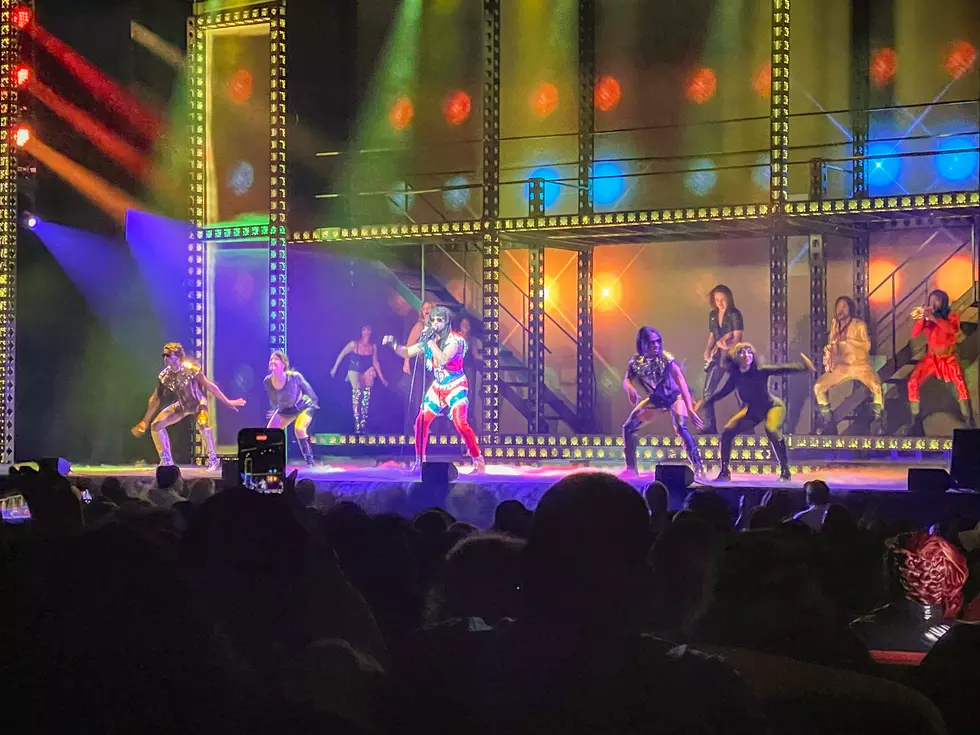
60 Hip-Hop ‘Firsts': Rap’s Must-Know Milestones
Aug. 11, 1973 is widely considered to be the day that hip-hop was born, when DJ Kool Herc brought out his "merry-go-round" style of record-spinning during a party at 1520 Sedgewick Ave., in the Bronx, N.Y. Since then, hip-hop has grown, both as an art form and in popularity. We've compiled the must "must-know" milestone moments in its history, from before the first single was released up to the present day, in our list of 60 Hip-Hop Firsts.
1. First Female Rapper: MC Sha-Rock of Funky 4 + 1 (1976)
As crews came together around the new sound, the Funky 4+1 stood out, largely because of the "plus one": Sharon Green, aka MC Sha-Rock, the first female MC. Even before they put out their first record, 1979's "Rappin & Rocking the House," she established herself by going toe-to-toe in battle raps with male counterparts such as Grandmaster Flash.
2. First Single: Fatback, '“King Tim III (Personality Jock)" (1979)
While the origins of rap can be traced back to the spoken-word-over-music recordings by the Last Poets and Gil Scott-Heron, the first commercially available single rooted in DJ Kool Herc's creation was “King Tim III (Personality Jock)" by Fatback, a funk/disco group that had been around since 1972. "King Tim" refers to Tim Washington, who provided the vocals. Originally released as the b-side of "You're My Candy Sweet" on March 25, 1979, DJs opted for the flip side and the track reached No. 26 on Billboard's Hot Soul Singles chart. The line "A little left hand, right hand in the air / And you sway 'em like you just don't care" is believed to be the first recorded instance of what would soon become "Throw your hands in the air / And wave 'em like you just don't care."
3. First Rap Song to Chart on the Hot 100: The Sugarhill Gang, "Rappers Delight" (1979)
'“King Tim III (Personality Jock)" may have been the first commercially available rap single, but not by long. Only a few months later, on Aug. 2, 1979, the Sugarhill Gang released "Rapper's Delight." And possibly because it outperformed Fatback, peaking just inside the Top 40 at No. 36, it became widely accepted, erroneously, that "Rapper's Delight" was the first rap single.
4. First Hip-Hop Radio Show: Mr. Magic's Disco Showcase (1979)
John "Mr. Magic" Rivas, a member of the Juice Crew from the Queensbridge housing project in Queens, N.Y., began spinning hip-hop records during his Disco Showcase on WHBI 105.9 FM. The two-hour program began at 2AM and Rivas paid $75 an hour for the airtime. Three years later, he moved to WBLS, a much bigger station, and rebranded the show as Rap Attack. Marley Marl served as his DJ and sidekick until Rivas left the station in 1989. Whodini paid tribute to him with "Magic's Wand"
5. First Single by a Female Group: The Sequence, "Funk You Up" (1979)
Twenty years before her breakthrough as a solo artist, Angie Stone, then calling herself "Angie B," was a member of Columbia, S.C.'s the Sequence with Cheryl "The Pearl" Cook and Gwendolyn "Blondy" Chisolm. After getting backstage at a Sugarhill Gang concert and proving themselves to Sugar Hill Records founder Sylvia Robinson, they got signed and recorded "Funk You Up," the second single ever on the label. It peaked at No. 15 on Billboard's Hot Soul Singles chart and they released nine more singles -- two of which charted -- and three albums for the label. In 2017, they sued Bruno Mars and Mark Ronson on the grounds that "Uptown Funk" was too similar to their biggest hit.
6. First Rap Video: "Rapper's Delight" (1979)
The Sugarhill Gang made good use of their 1979 appearance on the syndicated New Jersey-based Soap Factory Disco Show, turning the surprisingly high-quality production into rap's first video. Multiple sources state that Whodini's "Magic's Wand" was the first officially commissioned video, but the clip currently can't be found on the internet.
7. First Rapper to Sign With a Major Label: Kurtis Blow (1979)
Even though so many major labels had offices in New York, it was a British company that became the first to sign a rapper, Kurtis Blow. As he told All Hip-Hop, he cut a record called "Christmas Rappin'," which producers J.B. Moore and Robert Ford unsuccessfully shopped around to 22 labels before John Stains of Mercury made a deal.
8. First Album: The Sugarhill Gang, The Sugarhill Gang (1980)
Hip-hop took its first tentative steps into the album format in 1980. The Sugarhill Gang’s self-titled effort from February of that year is widely considered to be the first full-length rap album. However, Sugar Hill Records founder Sylvia Robinson reportedly didn’t think people were ready to buy an entire long-player featuring nothing but rap music. So alongside a handful of songs in the style of “Rapper’s Delight” you’ll also find a full side's worth of R&B ballads and instrumental disco tracks.
Kurtis Blow's September 1980 eponymous album is credited as the first to be released by a major label. The Sequence also released their debut full-length effort that year, and multi-artist compilations such as the The Great Rap Hits and Rap… Rap… Rap… began to appear on record shelves around this time.
9. First Gold Single: Kurtis Blow, "The Breaks" (1980)
One of the conditions of Blow's deal allowed him to record a second if "Christmas Rappin'" sold 30,000 copies. It sold 373,000, which led to his self-titled debut and the follow-up single, "The Breaks." Once again, Blow defied expectations, reaching No. 4 on the R&B chart and selling 940,000 copies to become the first rap single to be certified gold.
10. First to Appear on National Television: Kurtis Blow, Soul Train (Sept. 27, 1980)
The ultimate tastemaker for black America, Soul Train, took note of hip-hop's growing popularity when they brought Blow on for "The Breaks" during their Sept. 27, 1980 episode. Also appearing on the show were L.T.D. and Seventh Wonder.
11. First Beef: Kool Moe Dee vs. Busy Bee (1981)
Given that boasting and trading insults has long been a part of African American music -- see Otis Redding and Carla Thomas' "Tramp" for a perfect example -- it's all-but impossible to pinpoint the start of battle rapping. The earliest we could find was Kool Moo Dee's slaying of Busy Bee at a contest at Harlem World in 1981.
12. First Rappers on Saturday Night Live: Funky 4+1 (Feb. 14, 1981)
Deborah Harry of Blondie served as both the host and musical guest on the Valentine's Day 1981 episode of Saturday Night Live. In addition to singing covers of Teddy Pendergrass' "Love TKO" and Devo's "Come Back Jonee," she also brought along the Funky 4+1 to perform "That's the Joint." As Blondie guitarist, and Harry's then-boyfriend Chris Stein told WaxPoetics, "[T]hey let us pick a musical guest to be on with us," he said. "The people on the show were so nervous about them doing it. I remember trying to explain to them how scratching worked. Trying to verbalize what that is for someone who has no idea, it’s really difficult.” Instead, the group wound up rapping to a backing tape. You can see their performance at the 11-minute mark of the video above, right after Harry introduces them as "among the best street rappers in the country" and "her friends from the Bronx."
13. First No. 1 Hot 100 Song With a Rap, Blondie, "Rapture" (March 28, 1981)
Six weeks after Saturday Night Live, Blondie's "Rapture" began its two-week stint at No. 1. The track concluded with a rap by Harry that gave a shout-out to both Fab Five Freddy and Grandmaster Flash. Harry had been hip to them since 1977. "She said, 'I'm going to write a rap about you on my next record.' And I was like, 'Yeah, right," Flash told the Daily News. "And about five or six months later, 'Eatin' cars and . . . eat up bars . . . and Flash is fast, Flash is cool.' She kept her word. ... "I was introduced. So now ...white people and people of other colors were, 'Who is Flash?' So she tremendously opened the door."
14. First National News Story About Hip-Hop: 20/20 (July 1981)
Eight years after DJ Kool Herc's party, ABC's 20/20 news magazine show devoted a segment to the "overnight phenomenon" of rap by Steve Fox. He credited "Rapture" for bringing it to the masses and also pointed out its deep roots in African American traditions. Fox concluded by predicting that rap would become a cultural force because "it lets ordinary people express ideas they care about, in language they can relate to, put to music they can dance to. Not everyone can sing, but everyone can rap." "That's marvelous," host Hugh Downs said.
15. First International Tour: New York City Rap Tour (November 1982)
Before hip-hop had ventured out into America, it had gone global. Bernard Zekri, a French journalist who was living in New York, had fallen in love with rap and decided to take it to his native country. In November 1982, thanks to Roxy founder Kool Lady Blue, the New York City Rap Tour brought the nascent culture to France and London, with performances by Afrika Bambaataa and the Soulsonic Force, Fab 5 Freddy, Grandmaster D.ST and the Infinity Rappers, Futura 2000, Dondi, Rammellzee, the breakdancing Rock Steady Crew, and the World Champion Fantastic Four Double Dutch Girls. "They had this whole show," David Hershkovits, who covered it for the Daily News, recalled in Jeff Chang's Can't Stop Won't Stop: A History of the Hip-Hop Generation. "It wasn't just a band, it was the graffiti and the breakdancers and the DJs and the whole experience."
16. First Hip-Hop Movie: Wild Style (1983)
Written, directed and produced by Charlie Ahearn, 1983's Wild Style told the story of a graffiti artist (real-life artist Lee Quinones) and features Grandmaster Flash, Fab 5 Freddy, Busy Bee and others. As a part of New York's downtown art scene, Ahearn had been observing the intersection of graffiti and rap cultures for a few years and decided to chronicle it.
"I was interested in making a pop movie," he told Red Bull Music Academy. "I knew that I should be documenting this thing, but I hated the idea of making a documentary. So the question is how can I make a pop movie out of this thing? To me, the Bruce Lee movies were the thing that I was most excited by. You go to 42nd Street, you go to see kung fu movies. I wanted something that could be on that level, something that could show on 42nd Street. My idea was to do what excited me most. There was no historical perspective. Let’s go on this trip, it’s like a cartoon version of what was happening."
17. First Rap Group Signed to a Major Label: The Fearless Four (1983)
After a pair of successful singles on Enjoy, including "Rockin' It," Harlem's Fearless Four jumped to Elektra. They released two singles for the label, "Just Rock" and "Problems of the World," the latter of which was produced by Kurtis Blow.
18. First Hip-Hop Radio Station: KDAY 93.5 FM, Los Angeles (1983)
At a time when rap was still considered a fad, Greg Mack was hired to be the music director at KDAY 1580-AM in Los Angeles. He convinced his bosses to allow him to add rap to the station's playlists, first in the evening and, when the ratings jumped, in the afternoon during his "Mack Attack" show. The station would soon go all hip-hop and Mack's program became the place for those on the rising West Coast scene to be heard.
19. First Hollywood Movie With Breakdancing: Flashdance (1983)
A year before Beat Street and Breakin', filmgoers got to see breakdancing on the big screen via a scene in Flashdance. Irene Cara, who sang the movie's No. 1 theme song, included a song called "Breakdance" on her album What a Feelin'. It reached No. 8 and was her last Top 10 hit.
20. First Music Video Show Dedicated to Hip-Hop: Video Music Box (April 1984)
Before MTV decided to start broadcasting rap videos, Ralph McDaniels, an engineer at WNYC-TV, and Lionel Martin created Video Music Box. With Whodini's "Five Minutes of Funk" as its theme, it became the place to see hip-hop in TV in New York, and Jay-Z and Nas watched it regularly. The show is still running, although it moved to WNYE-TV in 1996. "I knew this was a passion but I didn't see that it would go this long," McDaniels said.
21. First Gold Album: Run-D.M.C., Run-D.M.C. (Released March 27, 1984)
On the strengths of the singles "It's Like That," "Hard Times" and "Rock Box," Run-D.M.C.'s self-titled debut was the first hip-hop record to sell 500,000 copies. In his original Village Voice review, Robert Christgau, the self-proclaimed "Dean of American Rock Critics" gave it a grade of A-. "It's easily the canniest and most formally sustained rap album ever," he wrote, "a tour de force I trust will be studied by all manner of creative downtowners and racially enlightened Englishmen. While their heavy staccato and proud disdain for melody may prove too avant-garde for some, the style has been in the New York air long enough that you may understand it better than you think. Do you have zero tolerance for namby-pamby bullshit? Do you believe in yourself above all? Then chances are you share Run-D.M.C.'s values."
22. First Hip-Hop Video Played on MTV: Run-D.M.C., "Rock Box" (1984)
Although "Rapture" was shown twice on the day that MTV launched, Aug. 1, 1981, it took them a few years to work rap videos by black acts into their rotation. That changed with Run-D.M.C.'s video for "Rock Box." But it would still take them four years to devote an entire show to hip-hop, when Yo! MTV Raps debuted in August 1988.
23. First U.S. Tour: 1984 Swatch Watch New York City Fresh Fest Tour (September 1984)
Hip-hop first ventured out on the road thanks to the 1984 Swatch Watch New York City Fresh Festival. Headlined by Run-D.M.C., the tour also starred Whodini, the Fat Boys, Newcleus, the Dynamic Breakers, Magnificent Force, Uptown Express, Dr. Jeckyll and Mr. Hyde, T. La Rock, with Kurtis Blow as host. According to Murray Forman's The 'Hood Comes First: Race, Space, and Place in Rap and Hip-Hop, it played 27 cities, beginning Labor Day Weekend in Greensboro, N.C., and took in $3.5 million, with five percent of proceeds going to the United Negro College Fund.
24. First Diss Track: Roxanne Shante, "Roxanne's Revenge" (1984)
In 1984, U.T.F.O. put out a track called "Roxanne, Roxanne," a rap about a girl who had rejected all the members of the crew. Shortly thereafter, a teenager called Lolita Shante Gooden was asked by Mr. Magic and Marley Marl to put a new rap over their beats. She assumed the identity of U.T.F.O.'s ire and rebranded herself as Roxanne Shante, slamming them in "Roxanne's Revenge." That began the famous "Roxanne Wars," with U.T.F.O. responding by finding their own woman who called herself "The Real Roxanne." Over the next year, dozens of people portraying members of her family, doctor and even someone who claimed that Roxanne was a man, recorded answer songs.
25. First Rap Album to Be Released on CD: Run-D.M.C., King of Rock (Jan. 21, 1985)
Two and a half years after compact discs first became commercially available in stores, hip-hop went digital. Possibly because of the unprecedented success of the first album, Profile was able to press King of Rock on CD. The record slightly improved on the chart successes of its predecessor, peaking at No. 52 on the 200 Albums chart and at No. 12 at R&B, where Run-D.M.C. had reached Nos. 53 and 14, respectively.
26. First High-Profile Hip-Hop Couple: Salt and Hurby "Luv Bug" Azor (1985)
Cheryl "Salt" James met Sandra "Pepa" Denton when they were students at Queensborough Community College and started calling themselves Super Nature. James' boyfriend, Hurby "Luv Bug" Azor, asked them to record a song he wrote for a project at the Center of Media Arts, an answer to Doug E. Fresh's "The Show." The single, "The Show Stoppa (Is Stupid Fresh)," became a hit and they changed their name to Salt-n-Pepa. Azor would write and produce the bulk of Salt-n-Pepa's material over the next decade.
27. First Platinum Album: Run-DMC, Raising Hell (Released May 15, 1986)
If King of Rock defied those who thought rap wouldn't last, Raising Hell served as the proof of its staying power. It not only reached No. 3 and topped the R&B chart, it became the first to sell one million copies, with its platinum certification coming on July 15, 1986. Within a year, it would sell three million and new fans went back and bought King of Rock, which went platinum on Feb. 18, 1987.
28. First Hip-Hop / Rock Crossover: Run-D.M.C. & Aerosmith, "Walk This Way" (1986)
Raising Hell's success was bolstered by a bonafide pop smash. Run-D.M.C. had used the opening of Aerosmith's 1975 hit "Walk This Way" as break, but didn't know the whole song until producer Rick Rubin played it for them and suggested they cut their own version.
"I went through my whole album collection looking for a song that Run-D.M.C. could do that would point out the relationship between hip-hop and other kinds of music," Rubin said. "'Walk This Way' had a familiar rock sensibility to it, but at the same time, with very little change, would function as a hip-hop song."
Rubin brought in Aerosmith singer Steven Tyler and guitarist Joe Perry, who had only recently reunited, to be on the song and the video, which saw Tyler, quite symbolically, breaking a hole in the wall that separated hip-hop and rock.
29. First No.1 Album: Beastie Boys, Licensed to Ill (Released Nov. 15, 1986)
Rubin took the hard-rock-meets-hip-hop approach even further with one of his signings to Def Jam, an all-white trio from New York that had switched from hardcore punk to rap, the Beastie Boys. Packed with Led Zeppelin and AC/DC samples, and even an appearance from Slayer guitarist Kerry King, Licensed to Ill was loud, brash and snotty, and it did the trick. On March 7, 1987, it topped Billboard's 200 Albums chart and stayed there for seven weeks.
30. First Rappers on the Cover of Rolling Stone: Run-D.M.C. (Dec. 4, 1986)
With a story called "Run-D.M.C. Is Beating the Rap," Rolling Stone finally put a hip-hop act on its cover. The piece, by Ed Kiersh, portrayed them as thoughtful, middle-class young men from Hollis, Queens who were adjusting to their fame and took their status as role models seriously. But they also had to defend themselves against the idea that their music promotes violence, following a series of incidents during their tour, including a fight between the Bloods and the Crips at the Long Beach Arena that summer.
31. First Gold and Platinum Album by Women: Salt-n-Pepa, Hot, Cool & Vicious (Released Dec. 8, 1986)
Despite the groundbreaking work by MC Sha-Rock, the Sequence and Roxanne Shante, women rappers didn't achieve mainstream success until Salt-n-Pepa's debut, Hot, Cool & Vicious. Featuring the Top 20 hit "Push It," it became not only the first rap album by a female act to go gold, but also platinum.
32. First Rappers on the Cover of Spin: Beastie Boys (March 1987)
Although Spin had marketed itself as more hip-hop friendly than the rock-focused Rolling Stone, they still took three months longer than its rival to put rappers on their cover. Scott Cohen's "Crude Stories: Meet the Beastie Boys" was a portrait of the "rudest, loudest, deffest, most obnoxious rappers in the world" that was the opposite of Rolling Stone's piece on Run-D.M.C. As recounted in Dan Charnas' The Big Payback: The History of the Business of Hip-Hop, Henry Allen, a friend of Chuck D, wrote a letter to the editor taking the magazine to task for putting a white hip-hop group on the cover.
33. First Rap LP to Receive an Explicit Lyrics Warning Sticker: Ice-T, Rhyme Pays (July 28, 1987)
In 1990, the Recording Industry Association of America, after years of pressure from the Parents Music Resource Center, began rolling out the "Parental Advisory: Explicit Lyrics" sticker on albums with content that may be unsuitable for youngsters. Perhaps fittingly, Banned in the U.S.A. by 2 Live Crew, who were in the midst of their obscenity trial over As Nasty as They Wanna Be, was the first record to be affixed with the now-familiar black-and-white sticker. But three years prior, Ice-T warned potential listeners of explicit content on the cover of his debut, Rhyme Pays.
34. First Double Album: DJ Jazzy Jeff & the Fresh Prince, He's the DJ, I'm the Rapper (March 29, 1988)
The breakthrough record by DJ Jazzy Jeff and the Fresh Prince contained 85 minutes of music, forcing it to be put on two vinyl records. In order to make it fit onto a 72-minute CD, seven songs -- "Nightmare on My Street", "As We Go", "D.J. on the Wheels," "He's the D.J., I'm the Rapper," "Hip Hop Dancer's Theme," "Jazzy's in the House" and "Human Video Game" -- were edited and "Another Special Announcement" was removed entirely.
35. First Album by a Solo Female Rapper: MC Lyte, Lyte as a Rock (Sept. 13, 1988)
It took nearly two years after Salt-n-Pepa struck platinum for a female rapper to release a solo album. But MC Lyte made up for lost time with the heralded Lyte as a Rock. Featuring the No. 1 Rap Single "Paper Thin," the record launched her career, which has seen her branch out into acting, artist management and philanthropy.
36. First Platinum Single: Tone-Loc, "Wild Thing" (Oct. 15, 1988)
Once again, rock and hip-hop combined to make history. Tone-Loc's No. 2 smash "Wild Thing" had the requisite hard rock sample (Van Halen's "Jaime's Cryin'") and a video that put its own spin on Robert Palmer's "Addicted to Love" clip to cross over into the mainstream in then-record numbers for a rap single. It was certified platinum and double platinum on Feb. 3, 1989.
37. First Grammy for Best Rap Performance: DJ Jazzy Jeff & the Fresh Prince, "Parents Just Don't Understand" (Feb. 22, 1989)
A decade after "Rapper's Delight," the Grammys could no longer ignore hip-hop's role in American culture. DJ Jazzy Jeff & the Fresh Prince's "Parents Just Don't Understand" was perhaps an obvious choice for the first award, in a field that contained J. J. Fad ("Supersonic"), Kool Moe Dee ("Wild Wild West"), LL Cool J ("Going Back to Cali") and Salt-n-Pepa ("Push It"). Although even then it caused controversy when the RIAA announced that the presentation of the award would not be televised. In response, Russell Simmons and Lyor Cohen of Def Jam organized a boycott, with Public Enemy and Slick Rick among those who took part.
38. First Song to Top the Hot Rap Songs Chart: Stop the Violence Movement, "Self-Destruction" (March 11, 1989)
A month after the Grammys, Billboard debuted its own chart to list the most popular hip-hop songs in the country. Its inaugural No. 1 was "Self-Destruction" by the Stop the Violence Movement. After the 1987 killing of his Boogie Down Productions partner Scott La Rock, KRS-One brought together some of his fellow East Coast rappers -- including Public Enemy, Heavy D, MC Lyte, Doug E. Fresh and Kool Moe Dee -- to denounce violence. Proceeds were donated to the National Urban League. The song remained atop the chart for five weeks.
39. First to Get in Trouble With the FBI for Their Lyrics: N.W.A. (Aug. 1, 1989)
A year after the release of N.W.A.'s Straight Outta Compton, Priority Records received a letter from Milt Ahlerich, the assistant director for the Office of Public Affairs at the FBI on official stationery. Without specifically naming "Fuck tha Police," he claimed one of their songs "encourages violence against and disrespect for the law enforcement officer" and told them that 152 officers had been killed in the line of duty in the past two years. Speaking to The Washington Post, Ahlerich denied that he was trying to put governmental pressure on the band or its label, but rather address concerns within Bureau over violence directed at police officers. Barry Lynn of the American Civil Liberties Union called the letter "intimidating. ... It's designed to get Priority to change its practices, policies and distribution for this record, and that's the kind of censorship by intimidation that the First Amendment doesn't permit."
40. First Diamond Album: MC Hammer, Please Hammer, Don't Hurt 'Em (Feb. 12, 1990)
The statistics on MC Hammer's third disc, Please Hammer, Don't Hurt 'Em, are astounding, especially given how hip-hop was still widely considered a novelty only a few years earlier. It spent 21 weeks atop the Billboard 200 and 28 weeks at No. 1 on the Top R&B/Hip-Hop Albums chart. On April 15, 1991, only 14 months after its release, it was certified diamond platinum for sales in excess of 10 million copies.
41. First Rapper to Be Nominated for a Best New Artist Grammy: Tone-Loc (Feb. 21, 1990)
Tone-Loc's success earned him a Grammy nomination for Best New Artist, and two other acts with hip-hop leanings, Neneh Cherry and Soul II Soul, were also recognized, as was the folk duo Indigo Girls. But the winners were Milli Vanilli, whose award was rescinded nine months later when group mastermind Frank Farian was forced to admit that Fab Morvan and Rob Pilatus, who represented them in the videos and onstage, did not sing on their album.
42. First Rapper on the Cover of Major U.S. News Magazine: Tone-Loc (March 19, 1990)
As hip-hop was dominating the charts, one of mainstream America's two most widely read news magazines took notice. Newsweek's cover boasted "Rap Rage" in big letters, followed by "Yo! Street rhyme has gone big time. But are those sounds out of bounds?" But who did they choose to represent the anger? Tone-Loc, hardly the most controversial or threatening rapper on the scene. Reportedly Newsweek were debating between Tone-Loc and LL Cool J for the cover.
43. First Full Rap Song to Top the Hot 100: Vanilla Ice "Ice Ice Baby" (Nov. 3, 1990)
In the midst of what became known as the "golden age" of hip-hop, rap finally got a song to top Billboard's Hot 100. But it wasn't one of the defining tracks by critical favorites like Public Enemy, the Native Tongues groups or the up-and-coming West Coast gangstas. Instead, it was "Ice Ice Baby" by Vanilla Ice, the much-derided, Queen-sampling Dallas rapper whose label had created a fake bio in order to boost his street cred.
44. First Grammy Award for Best Rap Solo Performance: MC Hammer, "U Can't Touch This" (Feb. 20, 1991)
Two years after debuting a category for rap (Young MC's "Bust a Move" won in 1990), the Grammys added a second to distinguish between solo acts and groups (although not between albums and songs). They went with MC Hammer's "U Can't Touch This," which beat out Queen Latifah's All Hail the Queen album, Big Daddy Kane's "I Get The Job Done," Vanilla Ice's "Ice Ice Baby" and Monie Love's "Monie In The Middle."
45. First Grammy Award for Best Rap Performance by a Duo or Group: Quincy Jones, Big Daddy Kane, Ice-T, Kool Moe Dee, Melle Mel & Quincy Jones III, "Back on the Block" (Feb. 20, 1991)
For the second award dedicated to hip-hop that night, voters gave the Grammy to longtime favorite Quincy Jones for his star-studded "Back on the Block" over Digital Underground ("The Humpty Dance"), DJ Jazzy Jeff & The Fresh Prince (the And in This Corner... album), Public Enemy (Fear of a Black Planet) and the West Coast Rap All-Stars ("We're All in the Same Gang").
46. First Rapper to Meet a President: Eazy-E: (March 18, 1991)
Even as the culture wars over rap lyrics continued, Eazy-E and N.W.A. manager Jerry Heller were invited to lunch with President George H.W. Bush and the Republican Senatorial Inner Circle by Senate Minority Leader Bob Dole. According to Heller in his book Ruthless, the invitation came as a result of a donation Eazy-E made to a South Central charity and the meal consisted of poached salmon and roast beef -- and that Eazy-E was stoned. But the rapper denied that he was a Republican, or even political. "How the fuck can I be a Republican when I got a song called 'Fuck tha Police?'" he said. "I ain't shit—ain't a Republican or Democrat. I didn't even vote. My vote ain't going to help! I don't give a fuck who's the president."
47. First Rapper to Launch a Clothing Line: Christopher "Play" Martin (1991)
With his star on the rise thanks a pair of gold records and the hit House Party movies, Christopher "Play" Martin of Kid 'n Play opened up a boutique featuring his own designs called IV Plai, taking over an old game room in his hometown of East Elmhurst, Queens, N.Y. "I love fashion," he told The New York Times. "And I knew I would give back to the neighborhood when I could. ... There is this fear in the entertainment business that you'll end up going back to your old job at Burger King. I'm going to make sure that never happens."
48. First Rappers to Win a Grammy in a Non-Rap Category: Arrested Development (Feb. 24, 1993)
Prior to 1993, rappers had only won Grammys in their designated categories. That changed when Arrested Development beat out Billy Ray Cyrus, Sophie B. Hawkins, Kris Kross and Jon Secada for Best New Artist thanks to their album 3 Years, 5 Months and 2 Days in the Life Of... The record was one of the most popular socially conscious hip-hop records of its day.
49. First Platinum Album by a Solo Female: Da Brat, Funkdafied (June 28, 1994)
Funkdafied introduced the world to Shawntae Harris, aka Da Brat, who was all of 20 when it was released. It topped the Top R&B/Hip-Hop Albums chart and went platinum on Jan. 6, 1995. She'd break the million mark again with 2000's Unrestricted.
50. First Hip-Hop Video Game: Rap Jam: Volume One (January 1995)
Released for the Super Nintendo Entertainment System in 1995, Rap Jam: Volume One featured such popular rappers as Coolio, House of Pain, Queen Latifah, Warren G and Onyx playing one-on-one on the streets of five cities. Each rapper had their own special move, and no fouls were called. A second volume was never produced.
51. First Rap Double Album to be Released on CD: Various Artists, Down South Hustlers: Bouncin' and Swingin' (Oct 31, 1995)
As discussed above, DJ Jazzy Jeff and the Fresh Prince's He's the DJ, I'm the Rapper was edited to fit on a single CD, but no such changes were made to Master P's No Limit two-disc compilation, which featured "Playaz from the South," his hit with UGK and Silkk the Shocker. A few months later, on Feb. 13, 1996, 2Pac dropped his own double album, All Eyez on Me.
52. First Artist to Have Two No. 1 Albums in One Year: 2Pac, All Eyez on Me and The Don Killuminati: The 7 Day Theory (1996)
As if All Eyez on Me being a double album didn't prove how creative 2Pac was at the end of his life, nine months later he posthumously put out The Don Killuminati: The 7 Day Theory, which was credited to Makaveli. Its title referred to how much time he spent working on it -- three days to record his vocals and another four to mix it -- during the first week of August 1996, only a month before he was fatally shot on Sept. 7, 1996. Both albums went to No. 1
Two years later, DMX also hit the top spot twice in one year when he put out Flesh of My Flesh, Blood of My Blood only seven months after It’s Dark and Hell is Hot. He did it because Island Def Jam boss Lyor Cohen offered him $1 million if he did.
“I wanted to get that bonus,” DMX later told the Fader. ‘So I wasn’t playing with that show studio shit.” Indeed, he and his production crew took over numerous New York City recording studios at once, and also recorded in Miami and Los Angeles. “I used to sleep at Powerhouse,” remembered producer Dame Grease. “I’d be in there eating turkey sandwiches, Chinese and sleeping on the boards. Just cranking, cranking, cranking around the clock. The energy was crazy.”
53. First Best Rap Album Grammy: Naughty by Nature, Poverty's Paradise (Feb. 28, 1996)
For five years, Grammy nominations given out to solo and group rappers could be for one song or a whole album. That changed in 1996 with the debut of the Best Rap Album category. That night, Naughty by Nature claimed the award, beating out 2Pac (Me Against the World), Bone Thugs-n-Harmony (E. 1999 Eternal), Ol' Dirty Bastard (Return to the 36 Chambers: The Dirty Version) and Skee-Lo (I Wish).
54. First Rap Album to Win Album of the Year Grammy: Lauryn Hill, The Miseducation of Lauryn Hill (1999)
The 1999 Grammy Album of the Year category was noteworthy from the start, as all five nominees were made by female artists or female-fronted bands. When Lauryn Hill’s solo debut The Miseducation of Lauryn Hill was named the first hip-hop album to win this honor, it became historic. Co-presenter Whitney Houston made sure everybody in the audience understood and acknowledged just how important the moment was, but Hill was and remains determined to stay focused on self-improvement. To that end, she says she gives all her trophies to her mother.
“If I walked downstairs every day, and I saw all of my achievements,” she told Manufacturing Intellect in 2000, ”it would be so easy to become complacent. ‘Ive got all of these, and look at those, I don’t need to do anything else.’ But life is continued work, it’s constant learning… I get really afraid of those little comforts, those things that make us feel like we did something great. Because I’ve done nothing, and I mean that sincerely.”
55. First Oscar for Best Original Song: Eminem, "Lose Yourself" from 8 Miile (March 23, 2003)
Starring in the semi-autobiographical 8 Mile gave Eminem the opportunity to finish "Lose Yourself," a track he had demoed a few years earlier. “I had to make ["Lose Yourself" and "8 Mile"] while I was in the movie,” he told Funkmaster Flex. “Because once I stepped out of that movie ... I wouldn’t feel like I was in [the character.]” But despite its massive success -- it spent nearly three months at No. 1 -- Eminem didn't even bother attending the Academy Awards. "I was sleeping that night," he continued. "I just felt like I had no chance of winning. ... At that point in my life, I always felt like rap never got its fair shake on anything."
Since then, two other hip-hop songs have won the Oscar for Best Original Song: "It's Hard Out Here for a Pimp" by Three 6 Mafia (Hustle & Flow) and "Glory" by John Legend and Common (Selma).
56. First to Reach 1 Million Downloads: Outkast, "Hey Ya" (2004)
The popularity of OutKast's Speakerboxx/The Love Below coincided neatly with the rise of Apple's iTunes music store. Their smash "Hey Ya" became the first song, in any genre, to be legally downloaded 1 million times from iTunes and other sites. The record's popularity -- it sold 10 million copies -- led Andre 3000 to focus less on music, preferring instead to follow other pursuits, like fashion and acting. "Now it’s more like a hobby for me, so I don’t think about it in that way," he said in 2017. "Even with Outkast — if we never do another album, I’m totally fine with that. When I was 25, I said I don’t want to be a 30-year-old rapper. I’m 42 now, and I feel more and more that way. Do I really want to be 50 years old up there doing that? When I watch other rappers that are my age I commend them, but I just wonder where the inspiration is coming from. At this stage I’m really more focused on what I am going to be doing 10 years from now. And I hope to God it won’t be rapping.”
57. First Rappers Inducted Into the Rock and Roll Hall of Fame: Grandmaster Flash and the Furious Five (March 12, 2007)
Three years after the earliest hip-hop recording acts had become eligible for the Rock and Roll Hall of Fame, Grandmaster Flash & the Furious Five were inducted. The news from the T.V. woke Melle Mel out of his sleep, but Grandmaster Flash didn't believe it. "There had been two false alarms on it," Flash told Reuters, "so when somebody called my house, I didn’t take it too serious, to be honest. But when they told me, I just looked at the phone, hung up and went on my merry way. The next morning I started getting a lot of calls, so I just said, 'Note to self: This is it.' But it’s wonderful, wonderful, wonderful. Later than sooner still beats never!"
They were inducted by Jay-Z, who surprised the crew with his appearance. Since then, five other hip-hop acts have been enshrined: Run-D.M.C., the Beastie Boys, Public Enemy, N.W.A. and Tupac Shakur. While there will always be a segment of society that doesn't believe hip-hop belongs in the Hall of Fame, Flash sees his induction as validation that his music is all part of the same lineage.
“When you go back into the ‘70s, into the ingredient years of hip-hop, I played rock,” he told Yahoo. “I actually produced tracks that sounded like rock, from rock samples; we were into the rock sound. My instrument is the turntable, and so, I was able to walk into the Rock and Roll Hall of Fame with my turntables. All I know is I’m in company with some of the greatest musicians of all time — some of the greatest guitar players, greatest drummers, greatest ax players, greatest keyboardists, greatest singers. It’s incredible.”
58. First Woman to Rap at the White House: MC Lyte (2015)
In celebration of the 50th anniversary of the legislation that created the National Endowment for the Humanities and the National Endowment for the Arts, President and Mrs. Obama threw A Celebration of American Creativity. The evening, broadcast on PBS, included MC Lyte, Usher, Smokey Robinson, blues legend Buddy Guy, Trombone Shorty and Broadway stars Audra McDonald and Brian Stokes Mitchell. Introduced by Queen Latifah, who called her "my mentor, my inspiration, my all in all, the 'Godmother of Hip Hop,'" MC Lyte performed her then-recent "Dear John" and her 1989 classic "Cha Cha Cha."
59. First to Win a Grammy Lifetime Achievement Award: Run-D.M.C. (2016)
Despite having never won a Grammy for any of their hit songs or albums (Raising Hell was nominated in 1986 for Best R&B Performance by a Duo or Group With Vocal), the RIAA recognized Run-D.M.C. with its Lifetime Achievement Award. Darryl McDaniels admitted to Rolling Stone that he was conflicted with the idea.
"I guess it’s cool," he said, "’cause — and I’m talking from my egotistical rap microphone stage right now — they shoulda gave it to me in ’86 when even Michael Jackson said there was nothing in the world more popular, not even him."
But at the same time, he felt those who came before him deserved it more: "[D]on’t acknowledge Run-D.M.C. until [you] give that award to Afrika Bambaataa and the Zulu Nation for 'Planet Rock.' Give that award first to Grandmaster Flash and the Furious Five, the first rap group to be inducted into the Rock & Roll Hall of Fame, and it’s a damn shame that nobody in hip-hop knows that, you know what I’m saying?"
Ruth Brown, Celia Cruz, Earth, Wind & Fire, Herbie Hancock, Jefferson Airplane, Linda Ronstadt were the other recipients that year.
60. First Pulitzer Prize for Music: Kendrick Lamar, DAMN (2018)
Kendrick Lamar's DAMN wasn't just the first hip-hop album to win the Pulitzer. It was the first recording in any genre that wasn't classical or jazz to earn the prestigious award in its 75-year history. The Pulitzer board called the album “a virtuosic song collection unified by its vernacular authenticity and rhythmic dynamism that offers affecting vignettes capturing the complexity of modern African-American life.”
Although Lamar publicly didn't say anything more than “It’s an honor … I’ve been writing my whole life, so to get this type of recognition – it’s beautiful" on the night he accepted the award, he later said that it was "one of those things that should have happened with hip-hop a long time ago."
"It took a long time for people to embrace us—people outside of our community, our culture—to see this not just as vocal lyrics," he told Vanity Fair, "but to see that this is really pain, this is really hurt, this is really true stories of our lives on wax. And now, for it to get the recognition that it deserves as a true art form, that’s not only great for myself, but it makes me feel good about hip-hop in general. Writers like Tupac, Jay-Z, Rakim, Eminem, Q-Tip, Big Daddy Kane, Snoop [Dogg] . . . It lets me know that people are actually listening further than I expected."
More From 93.7 WBLK

